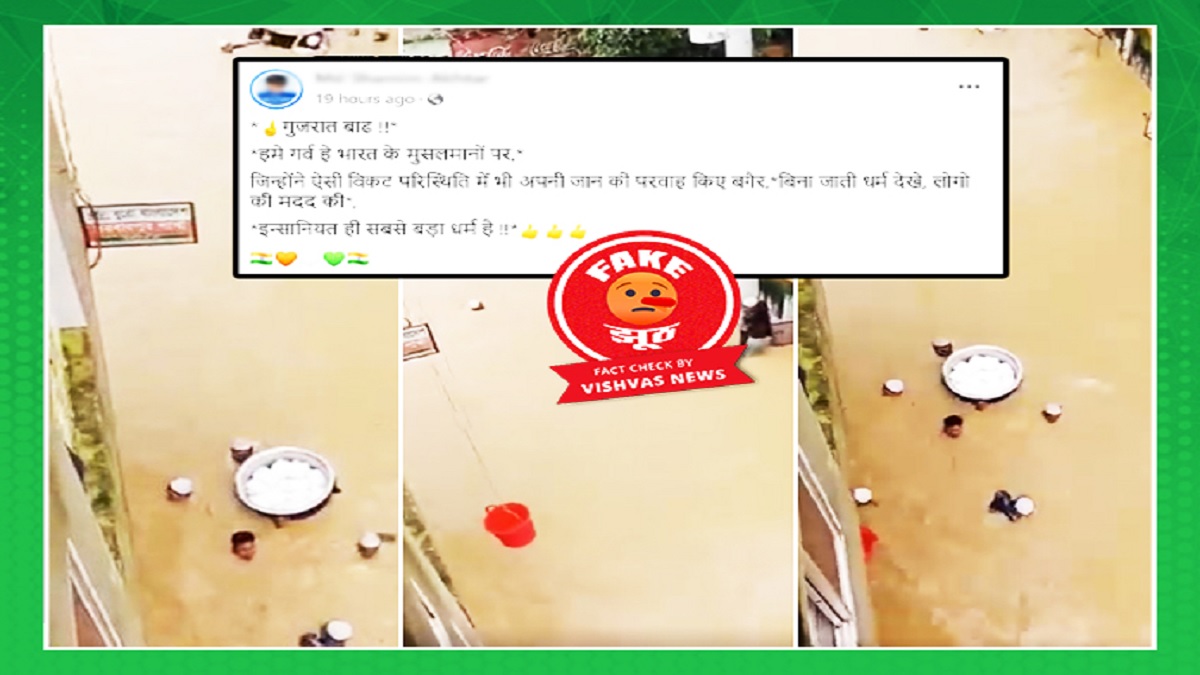The current heavy rains and floods in Gujarat have induced widespread disruption and hardship. Amidst this, a video circulating on-line reveals folks rescuing flood victims. The declare accompanying this video alleges it reveals the flood scenario in Gujarat. Nonetheless, a reality verify carried out by Vishvas Information reveals that this declare is fake. The viral video will not be from India however from Bangladesh, and it depicts college students from a Madrasa serving to flood victims of their space.
Tracing the Origin of the Video:
To research the authenticity of the declare, a reverse picture search was carried out utilizing keyframes from the video. This search led to the invention of the video on a Bangladeshi Fb consumer’s account named MH Fahad Mondol. The video was uploaded on August 25, 2024, with a caption written in Bengali. The caption confirmed the video’s origin to be Bangladesh, stating that Madrasa college students have been aiding flood victims within the space.
The Impression of Misinformation:
The unfold of false data associated to pure disasters can have detrimental penalties. Firstly, attributing the rescue efforts in Bangladesh to Gujarat not solely undermines the efforts of actual heroes working tirelessly to assist these affected by the Gujarat floods but in addition perpetuates the harmful cycle of misinformation. This inaccurate data can additional exacerbate worry and anxiousness amongst those that could already be coping with the aftermath of a pure catastrophe. Secondly, falsely associating the video with Gujarat can contribute to public confusion and make it tougher for these genuinely affected by the Gujarat floods to get the help they want. The unfold of misinformation throughout these crucial instances can distract from very important communication and useful resource allocation efforts, hindering the general aid and restoration course of.
Why We Ought to Be Cautious of On-line Content material:
The unfold of deceptive data is a severe problem. In an period of accelerating on-line exercise, crucial considering and cautious fact-checking are extra vital than ever. Listed here are some suggestions to assist us keep knowledgeable and keep away from being misled by false data:
All the time Query the Supply:
Earlier than believing something you see on-line, all the time attempt to decide the supply of the knowledge. Does it come from a dependable information outlet, a good group, or a person with a recognized experience? Be cautious of data from nameless sources or web sites with a recognized bias.
Search for A number of Sources:
When verifying data, you will need to search for affirmation from a number of sources. If the identical data seems on a number of credible sources, it’s extra prone to be true.
Take into account the Date:
When encountering data associated to an occasion, take note of the date it was revealed. Is it present, or might it’s outdated?
Make use of Reverse Picture Search:
In case you are uncertain about a picture, use a reverse picture search engine to search out its origin.
Have interaction in Crucial Considering:
All the time apply crucial considering to the knowledge you encounter on-line. Do not simply settle for what you learn or see at face worth. Ask your self questions like: “Does this data make sense?”, “What proof helps this declare?”, and “Might there be any biases affecting this data?”.
Take Away Factors:
In conclusion, the viral video claiming to point out the flood scenario in Gujarat is definitely from Bangladesh. The video showcases Madrasa college students aiding flood victims. This occasion emphasizes the significance of verifying data earlier than sharing it. Spreading false data not solely distorts actuality but in addition hinders professional aid efforts throughout disaster conditions. It’s our collective duty to make sure the integrity of on-line content material and to fight misinformation by training cautious fact-checking.




